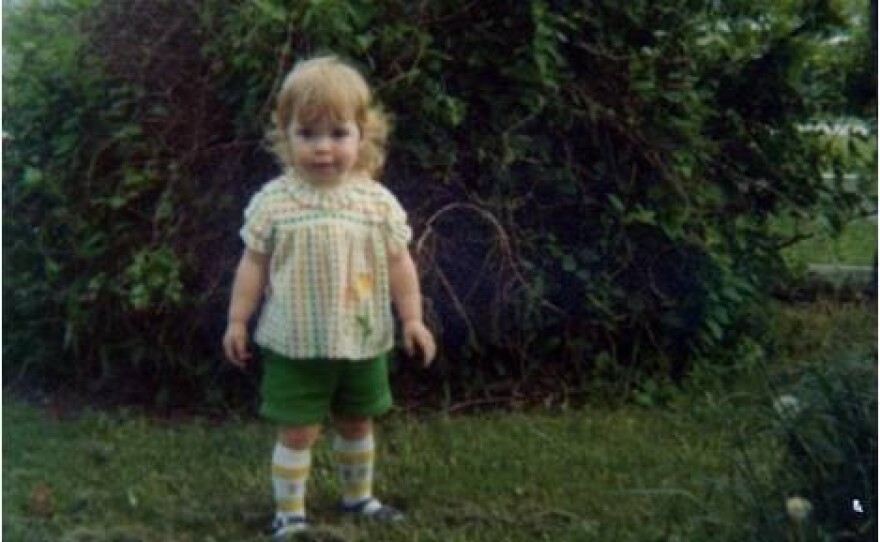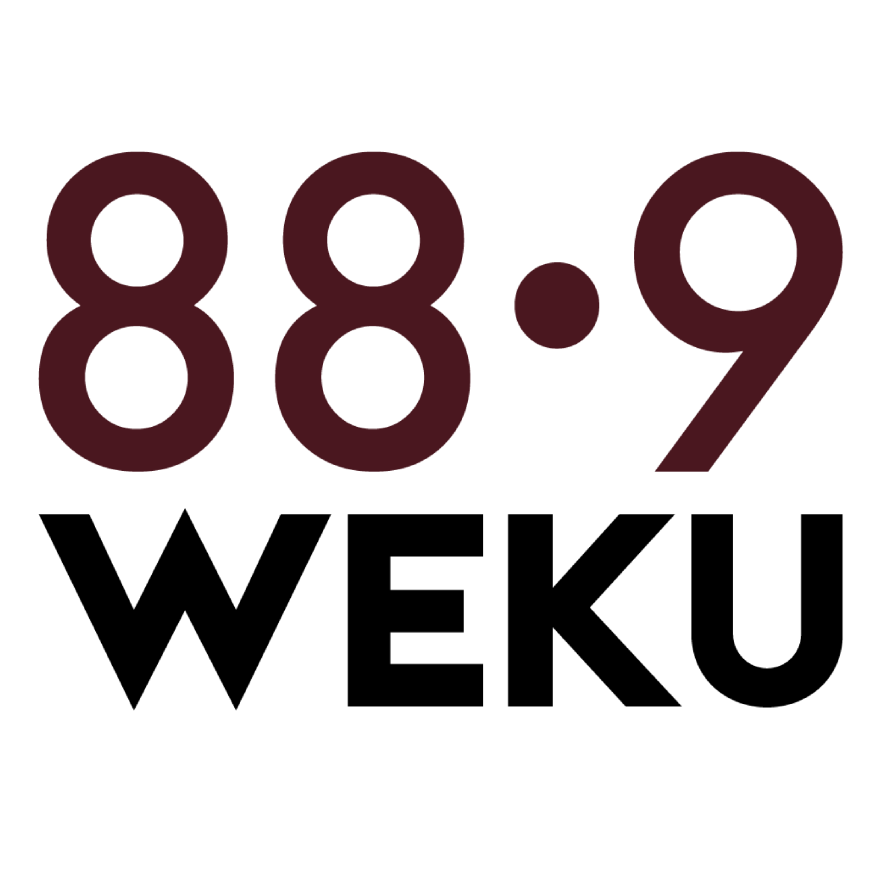Note: Josephine Sculpture Park is a financial supporter of WEKU.
As you pull off Lawrenceburg Road in Franklin County and drive up a gravel road, you immediately notice a couple of metal sculptures in nearby meadows.
Welcome to Josephine Sculpture Park. A free outdoor sculpture park where nearly 80 sculptures are spread throughout the 40 acres of woods and fields.
Melanie VanHouten, the creator of the park, says it may be the only one of its kind in the state.
“You know, most sculpture parks start because there's a benefactor who collects giant sculpture, which means there's some kind of billionaire. And they bequest, like a huge sculpture collection to a museum. And then the museum says, what are we going to do with all this giant, amazing sculpture, we have to build a park to, to house it. And that's normally how it starts.”
But VanHouten says that’s not how she and her husband, William Duvall, started Josephine Sculpture Park.
“It normally doesn't start with two people that have no money. But we knew how to rig sculpture, we knew how to build sculpture, we knew sculptors. My family still had this farm, thank goodness. So, we had the land.”
The land. That’s a big part of this story, and how the park ended up in Franklin County.
50 years ago, the property was a farm operated by VanHouten’s grandparents. She has fond memories of growing up in Franklin County, and spending time as a child exploring the family farm.
“I explored this farm by myself. And so, there were, you know, natural wonders to find, and I found some prickly pear cactus on parts of the farm. There are ponds out here, I would try to catch frogs, you know. But there were also all kinds of stuff to build with. And so, I would explore in these barns, and back then this was the barn for the cattle, we had some beef cattle out here. This was the feed barn, and we had the tobacco barn too. And I would just, you know, play and imagine and, you know, have these big adventures that were totally unstructured. And it was just really good for my imagination.”
VanHouten went on to graduate from the University of Kentucky with a Bachelor of Fine Arts in the sculpture program. She and her husband moved to Minneapolis, and for nine years VanHouten taught sculpture at a university in Saint Paul, Minnesota.
She says she was on a tenure track position when disturbing news came from her family in Kentucky. Her grandparent’s farm was headed for commercial development.
“And that just hurt my heart. And I couldn't let it go. And I had to come home. I mean, it was a big decision for us to leave. My husband and I both were in jobs that we loved. And you know, I had gone to school my whole life because I wanted to teach sculpture. And that's what I was doing in a school that I loved and a city that I loved. But you know, things in your life happen that sort of guide you.”
VanHouten and her husband set up a non-profit and honored her grandmother with the name, Josephine Sculpture Park. They found funding through the National Endowment for the Arts and opened the park in September of 2008 with sixteen sculptures.
VanHouten says she found plenty of fellow artists interested in the outdoor sculpture concept.
“In the beginning, you know, I just called all my friends all over the country that I knew made big sculpture. I mean, I made big sculpture. I know all these people, you know, it's kind of a small community. I called them and told them what I was doing and they're like, oh, a sculpture park in Kentucky. I don't have any sculpture in Kentucky. I'll bring it to you. Or I drove all over the country with a trailer and picked stuff up and brought it back.”
Today the sculptures number nearly eighty. The park is open every day of the year from dawn to dusk.
A large colorful map details the various trails and layout of the park. At each sculpture an information sign has the name and background of the artist and the sculpture. Unlike art in museums, guests are encouraged to touch the sculpture, and in some cases, visitors are allowed to climb on the structures.
Some of them are twenty feet tall and weigh several pounds. Most are made of metal, wood, and stone. Some are permanent fixtures at the park, and others are on loan from the artist. There are even a couple of sculptures made of shredded rubber tires.
The artists come from around the world. Perhaps one of the most unique exhibits is a circle of eight stone walls that are covered in bright colors of graffiti.
Visitors can bring their own paint and spray cans to mark the walls with words and pictures.
“We get some really seasoned graffiti writers that come out here and do amazing artworks, I mean, amazing paintings. And then we get, you know, kids that come out who are just kind of interested in like, what does it feel like to spray on a wall or to put their name on something, and they can do that here, you know, in a in a safe way. But then we also have, if you get close, you'll see like people write with markers or paint pens. And we've had poetry workshops out here, where we use this space for kids to write poetry on the walls, inspired by the natural landscapes. So, you really see a little bit of everything, and people just continue to paint over.”
VanHouten has also established an artist residency program at the park. Artists stay in housing nearby and can use the metal and wood shops, and tools to create sculptures.
“The goal is to exhibit work and to be able to pay artists to be able to make new work and to experiment. It's scary to be innovative on your own nickel, when you have to eat food, and pay rent and mortgages and things. So, you know, we're really committed to supporting them, and we encourage them to do things like they might not do other places.”
Nationally acclaimed blacksmith artists Matt and Karine Maynard of nearby Lawrenceburg support the park’s mission and created one of the sculptures.
Matt says, “I think it's a great way for the community to access art in a in a real tangible way. And you can walk up and touch these pieces. They're not on a pedestal in a museum which is fine, those are great, you know museums are fantastic but something about being able to come and touch a piece and physically be there with it to me I think that's really important for the health of the community and what Melanie has done to raise the level of arts in not just Frankfort but in Kentucky is something that I think is really commendable and we're really proud of what she's done.”
To support the park VanHouten says she submits ten to fifteen grant proposals a year plus she accepts donations and has a park membership available for patrons. Each year in June the park also hosts an event to support Josephine Sculpture Park.
“We have a great fundraising event each year called ‘Barn Raisin’, which celebrates conservation, culture and cuisine. And it's a musical concert with a farm to table dinner and it's a fabulous event.”
Tickets are on sale now for the gathering on Sunday, June 9th. More information on that event and other events is at www.josephinesculpturepark.org.
In the end, the park is a labor of love for VanHouten.
“I'm grateful that I like had the vision, but also that so many people in my life. And maybe I picked those people, but you know, so many people in my life said yeah, do this, I'm gonna help you do it. We're gonna do it. It's gonna be amazing. And the community was like, yes, please. Let's do this. And it's just grown tremendously from then.”
** WEKU is working hard to be a leading source for public service, and fact-based journalism. Monthly supporters are the top funding source for this growing nonprofit news organization. Please join others in your community who support WEKU by making your donation.
















